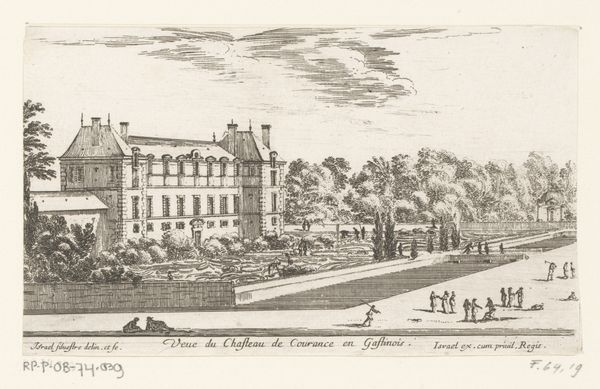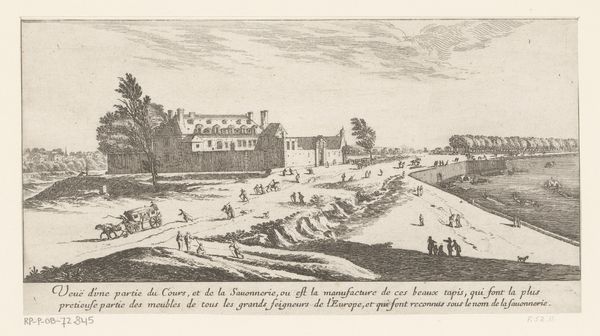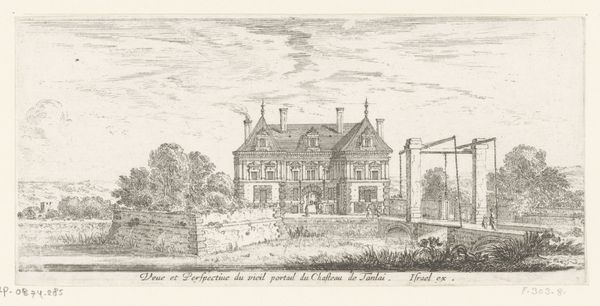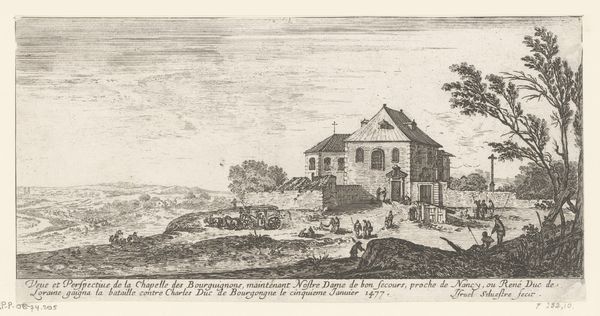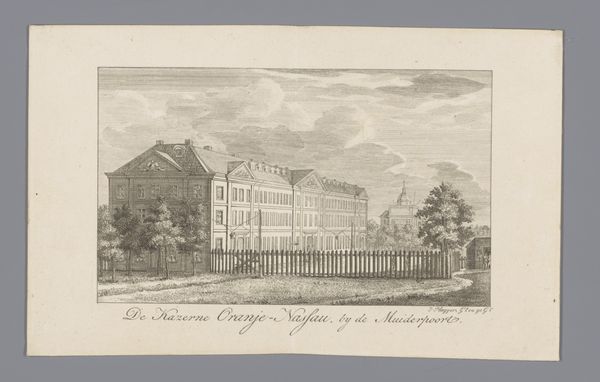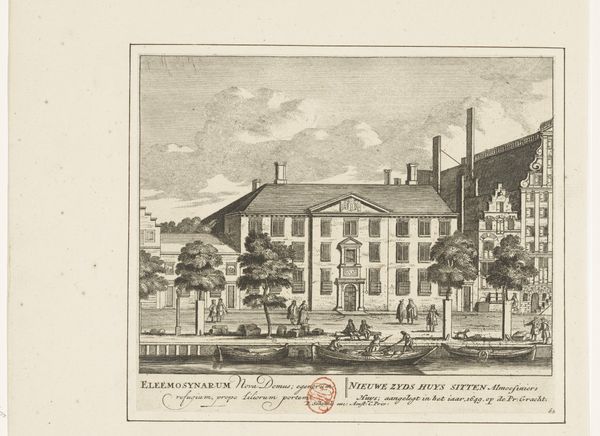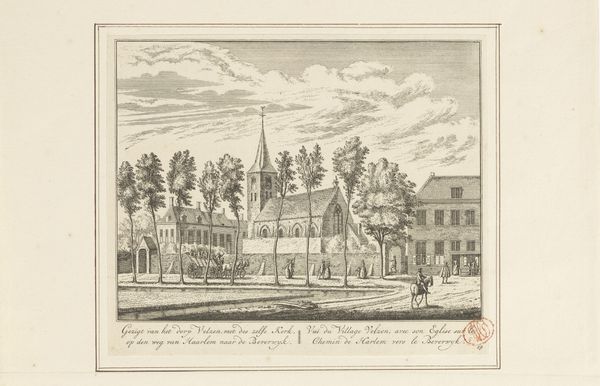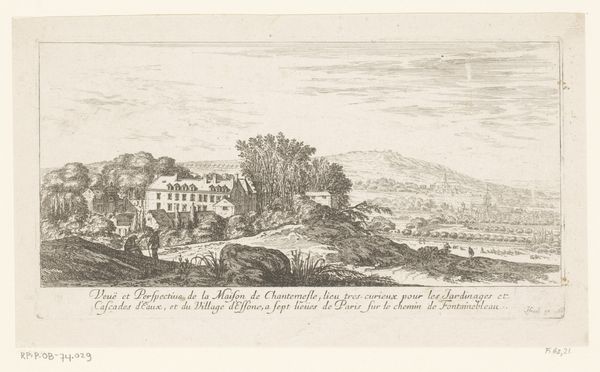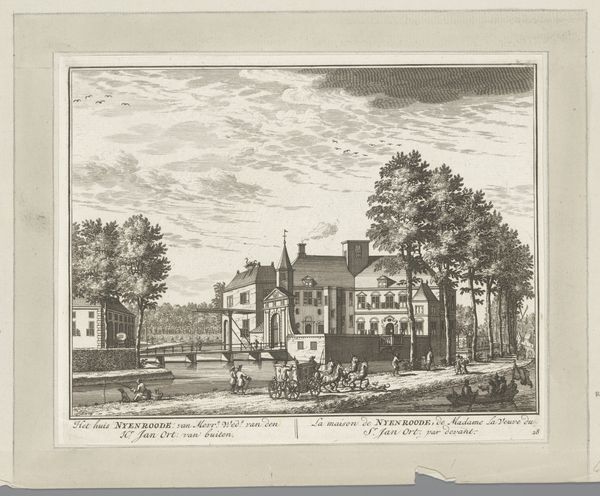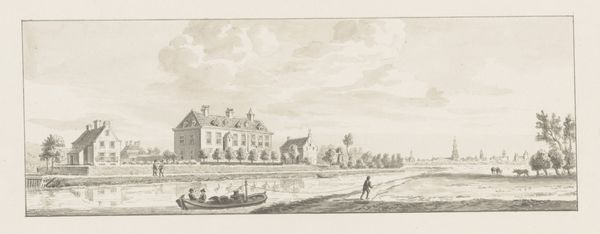
drawing, print, engraving, architecture
#
drawing
#
baroque
# print
#
landscape
#
line
#
cityscape
#
engraving
#
architecture
Dimensions: height 102 mm, width 174 mm
Copyright: Rijks Museum: Open Domain
Editor: Here we have "View of the House of Monsieur le Coigneux" by Israel Silvestre, dating back to 1652. It’s a drawing and print, a cityscape rendered in engraving using line techniques. It feels quite formal, even a bit imposing, despite the small figures in the foreground. What do you see in this piece? Curator: Beyond the aesthetic qualities, I see a statement about power and privilege, solidified through land ownership and displayed through architectural grandeur. Consider the historical context: France in 1652, still grappling with the social and political inequalities that would eventually fuel the revolution. Monsieur le Coigneux, a president of Parliament, embodies the elite class. This isn't just a house; it's a symbol of the structures that concentrate wealth and influence. What kind of message do you think the artist is communicating with the addition of figures engaging in manual labour? Editor: Perhaps they're meant to give a sense of scale, but I also wonder if there’s some social commentary implied? Curator: Exactly. Think about the gaze that is constructed here. Who is this image *for*? Certainly not the people pulling the cart. Does the inclusion of working-class figures soften the statement, or highlight the social hierarchy inherent in this "view?" Consider, too, how this image might function within the broader scope of baroque art – its role in crafting a narrative that justifies the status quo. How can visual representations uphold inequity? Editor: It makes me rethink how seemingly innocuous landscape art can perpetuate societal norms. Thanks for pointing out those layers! Curator: And thank you for being open to reinterpreting such images and unveiling the complexities they present!
Comments
No comments
Be the first to comment and join the conversation on the ultimate creative platform.
